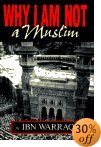|
Wahi: The
Supernatural Basis of Islam
Part II
- The Modern View of the Quranic Trance
Dr. Koenraad ELST
[Editor's Note: Kashmir Herald is honored to have Dr. Koenraad ELST
write a series of articles exclusively for Kashmir Herald. His series of
4 exclusive articles on "The Supernatural Basis of Islam" will be
published exclusively here on Kashmir Herald.]
Some modern
Western and even some Muslim-born scholars have diagnosed the process of
Quranic revelation to Mohammed as a case of paranoid delusion. For now
we shall discuss the analysis offered by the Marxist scholar Maxime
Rodinson. In his Penguin monograph Mohammed, p.76-79, he starts
out by rejecting the allegation that Mohammed’s claim to receiving
visions in a state of trance (wahi) was fraudulent. This
allegation has of course been made by Christian polemicists against
Islam, but also by modern leftist sympathizers of Islam seeking to
recast Mohammed in the mould of a social progressive: in order to
further his purported programme of social reform, Mohammed is said to
enact the role of conveyor of God’s voice merely to carry more
conviction. Against this line of thought, Rodinson argues:
“Modern
advances in psychology and psychiatry have made short work of such
simplistic explanations of fraud, whether justifiable or otherwise. The
reaction may even have gone too far in the other direction, for there
have been, and still are, cases of real fraud. But their number is
limited. At all events, it is now generally understood and admitted that
certain individuals can sincerely believe that they are the recipients
of visual, auditory and mental messages from the Beyond; and also that
their sincerity is no proof that these messages really come from where
they are claimed to come.”
So, where did
the Quranic messages come from?
“It is the
concept of the unconscious that has enabled us to understand these
things. (…) One has only to dip into psychology text-books to find a
hundred perfectly bona fide cases of people in a state of hallucination
hearing things and seeing visions which they claim quite genuinely never
to have seen or heard before. And yet an objective study of their cases
shows that these are simply fresh associations produced by the
unconscious working on things which have been seen or heard but
forgotten.”
Just like a
dream, a hallucination recombines old sensory and mental impressions:
“It is
therefore conceivable that what Muhammad saw and heard may have been the
beings described to him by the Jews and Christians with whom he talked.
It is understandable that, in the words that came to him, elements of
his actual experience, the stuff of his thoughts, dreams and
meditations, and memories of the discussions that he had heard, should
have re-emerged, chopped, changed and transposed, with an appearance of
immediate reality that seemed to him proof of some external activity
which, although inaccessible to other men’s minds, was yet wholly
objective in its nature.”
Throughout his
career as a Prophet (except, as we shall see, at the very beginning),
Mohammed genuinely believed that the visions and spoken messages which
he “received” were of divine origin. His wahi or Quranic trance
seemed to make a far deeper impression on his mind than any ordinary
human experience could, and he therefore considered it supremely real.
Today, both in mental hospitals and in the cult scene, you can find
numerous people who likewise believe to be regular recipients of
messages from Above. In some cases, these people manage to make others
believe in their claims, too. They then set themselves up as cult
leaders, revered by a group of followers as their direct telephone line
to God or the spirit world. It is not uncommon for people who regularly
hallucinate to function fairly normally in the world, sometimes highly
successfully. Thus, Joan of Arc derived from her visions the strength to
lead an army against the British invaders of France. Mohammed was
probably the single most successful voice-hearer in world history.
It is only in
a very few cases later on in his career that both contemporaries and
later scholars of Islam have found reason to cast doubt on the
genuineness of instances of Quranic trance. These are the cases where
the divine messages received during wahi were just a little too
convenient not to look like Mohammed’s self-serving fabrications. The
best-known instance is when Mohammed received permission from Allah to
marry Zaynab, the repudiated wife of his adopted son Zayd. Under Arab
customary law, this union was prohibited, but in a timely revelation
(Q.33:37, 33:50), Allah exempted Mohammed from this law. Christian
polemicists against Islam have often cited the Zaynab episode as proof
of Mohammed’s insatiable lust, but in fact its indication of
self-serving manipulation of the wahi by Mohammed is more
damaging to the Islamic belief system.
According to
Rodinson: “It is true that, later on, some disturbing characteristics
did appear. Muhammad had to take day-to-day decisions, decisions of a
political, practical and legislative nature, which could not wait for
some unspecified moment when the spirit might see fit to breathe on him.
He was constantly under fire, bombarded with questions and requests for
advice. The divinely inspired nature of his replies gave them a solid
basis of authority. Did he yield to the temptation to nudge the truth a
little? Some of the revelations correspond a little too closely to what
might have been the Prophet’s own human desires and calculations. Or was
it, once again, his unconscious at work? We shall never know.”
These few
somewhat suspect instances should at any rate not make us lose sight of
the general case: “When his soul was thus plunged into the void (…)
Muhammad then attained periodic states of ecstasy in which he felt that
he had been stripped of his own personality, submitting passively to the
invasion of a mysterious force, (…) he experienced the phenomena
described above – seeing and hearing things, either inwardly or
outwardly, in the mind or the imagination. We find these ecstasies and
sensory phenomena in a very similar form among persons suffering from
recognized mental conditions such as hysteria, schizophrenia and
uncontrolled verbalization.”
If anything
can dispel the lingering doubt about Mohammed’s genuine belief in the
reality of his trance visions, it is the description of his own reaction
when these psychic phenomena started. Rodinson: “A study of Muhammad’s
earliest messages, coupled with a perusal of accounts of the crises of
doubt or despair which preceded or accompanied them, can only produce a
skeptical attitude towards the theories which see them as evidence of a
coolly calculated plan carried out ruthlessly from motives of either
ambition or philanthropy. And these accounts do seem to be authentic.
Tradition, concerned to stress the supernatural affiliations of
Muhammed’s personality, would not have invented from scratch such very
human traits.”
[Part II:
The prophet’s very realistic and human reactions to the first instances
of Quranic trance will be discussed in the next installment.]
[Click here for Part I]
[Born in Leuven, in the
year 1959, Koenraad Elst grew up in the Catholic Community in Belgium.
He was active for some years in what is known as the new Age movement,
before studying at the famed Catholic University of Leuven (KUL). He
graduated in Chinese Studies, Indo-Iranian Studies and Philosophy. He
earned his doctorate magna cum laude with a dissertation on the politics
of Hindu Revivalism.
He took courses in Indian
philosophy at the Benares Hindu University (BHU), and interviewed many
Indian leaders and thinkers during his stay in India between 1988 and
1992. He has published in Dutch about language policy issues,
contemporary politics, history of science and Oriental philosophies; in
English about the Ayodhya issue and about the general religio-political
situation in India.
A few of his latest
books are:
-
Who Is a Hindu? (2002)
-
Ayodhya: The Case against the Temple (2002)
-
The Saffron Swastika: The Notion of 'Hindu Fascism' (2001)
-
Decolonizing the Hindu Mind (2001)
-
Gandhi and Godse (2001)
-
Negationism in India: Concealing the Record of Islam,
-
Ram Janmabhoomi vs. Babri Masjid, and
-
Ayodhya
and After.
While doing research in
Indian philosophy at Benares Hindu University, he started taking an
interest in the ongoing Rushdie and Ayodhya controversies and the larger
debate on secularism. He published several books on the historical
Ayodhya file. He is currently working
as a free-lance scholar and columnist.] |


